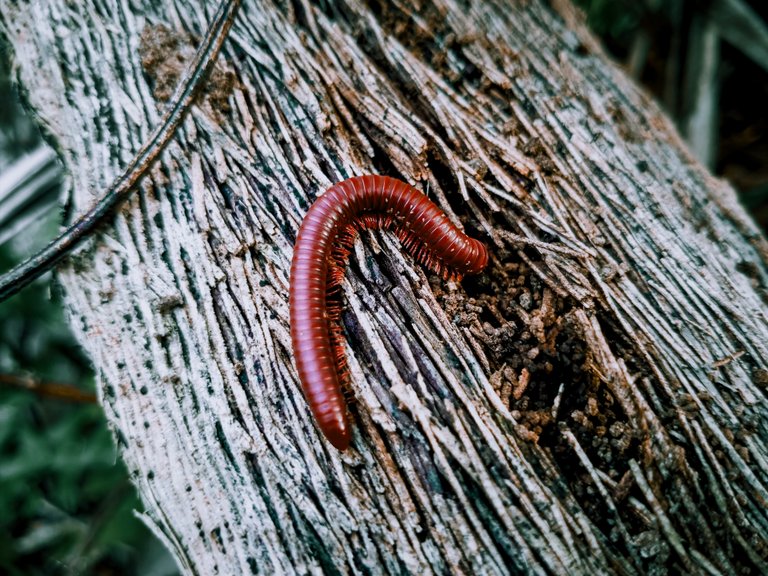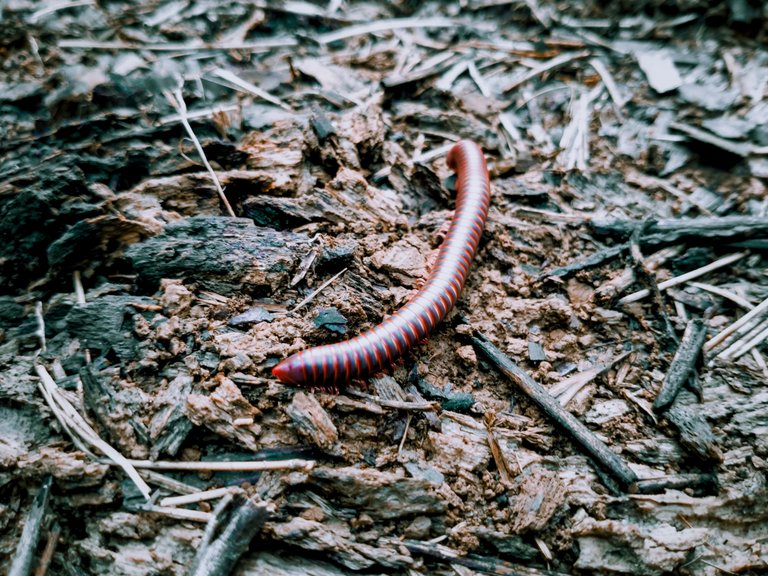Genus Trigoniulus
| Latin Name | Observation date | Location |
|---|---|---|
| Genus Trigoniulus | December 18 2024 | Buket Alue Puteh, Aceh, Indonesia |

The genus Trigoniulus is a group of arthropods belonging to the julida family, in Indonesia this species is known as "millipede" which has many body segments, this genus is an important member of the diplopoda order which is known for its distinctive body structure and ability to adapt in various ecosystems, the Trigoniulus genus is often found in tropical areas, especially Asia, Africa and several countries in South America. The Trigoniulus genus plays an important role in the ecosystem as detritivores or eaters of rotting organic matter.
The characteristic of the Genus Trigoniulus is that their bodies are elongated and segmented with each segment equipped with two pairs of legs. This body structure allows them to move quickly and efficiently in their habitat, for example when they are under leaves, moist soil, or in around organic material that has begun to rot, while the body color of the Trigoniulus genus generally has a yellowish brown color, but this color can depend on the species and habitat where they live.
one of the main adaptations possessed by the Genus Trigoniulus is the ability to regulate their body humidity, as creatures that live in humid environments and automatically they need certain conditions to survive, most likely for this reason they are often found in locations that have high humidity, such as tropical forests or areas that receive frequent rainfall, the Trigoniulus genus tends to hide in dark and damp places during the day and they are active at night to find food and reproduce.
As detritivores, the Genus Trigoniulus plays a very important role in the process of decomposing organic material, they help break down organic material into simple components that can be utilized by various types of plants around them as nutrients, in this case they have contributed greatly to a healthy nutrient cycle in the ecosystem they are in, yeah even though they don't have a direct impact on humans, the Genus Trigoniulus has a very valuable ecological role in maintaining the balance of nature.





| Camera used | smartphone |
|---|---|
| Lens | - |
| Photography | Genus Trigoniulus |
| Location | Buket Alue Puteh |
| Photographer | @lightofhope |
| Link to original | community |
|---|---|
| Link | https://www.inaturalist.org/observations/255669138 |
| Latitude Longitude | Map | |
|---|---|---|
| =5.080479 | =97.46383 | https://www.openstreetmap.org/?mlat=5.0804793232&mlon=97.4638302997 |
Genus Trigoniulus I used to be very scared. No longer afraid. The photography was amazing. Thanks for sharing the photography.
Thanks for your contribution to the STEMsocial community. Feel free to join us on discord to get to know the rest of us!
Please consider delegating to the @stemsocial account (85% of the curation rewards are returned).
You may also include @stemsocial as a beneficiary of the rewards of this post to get a stronger support.